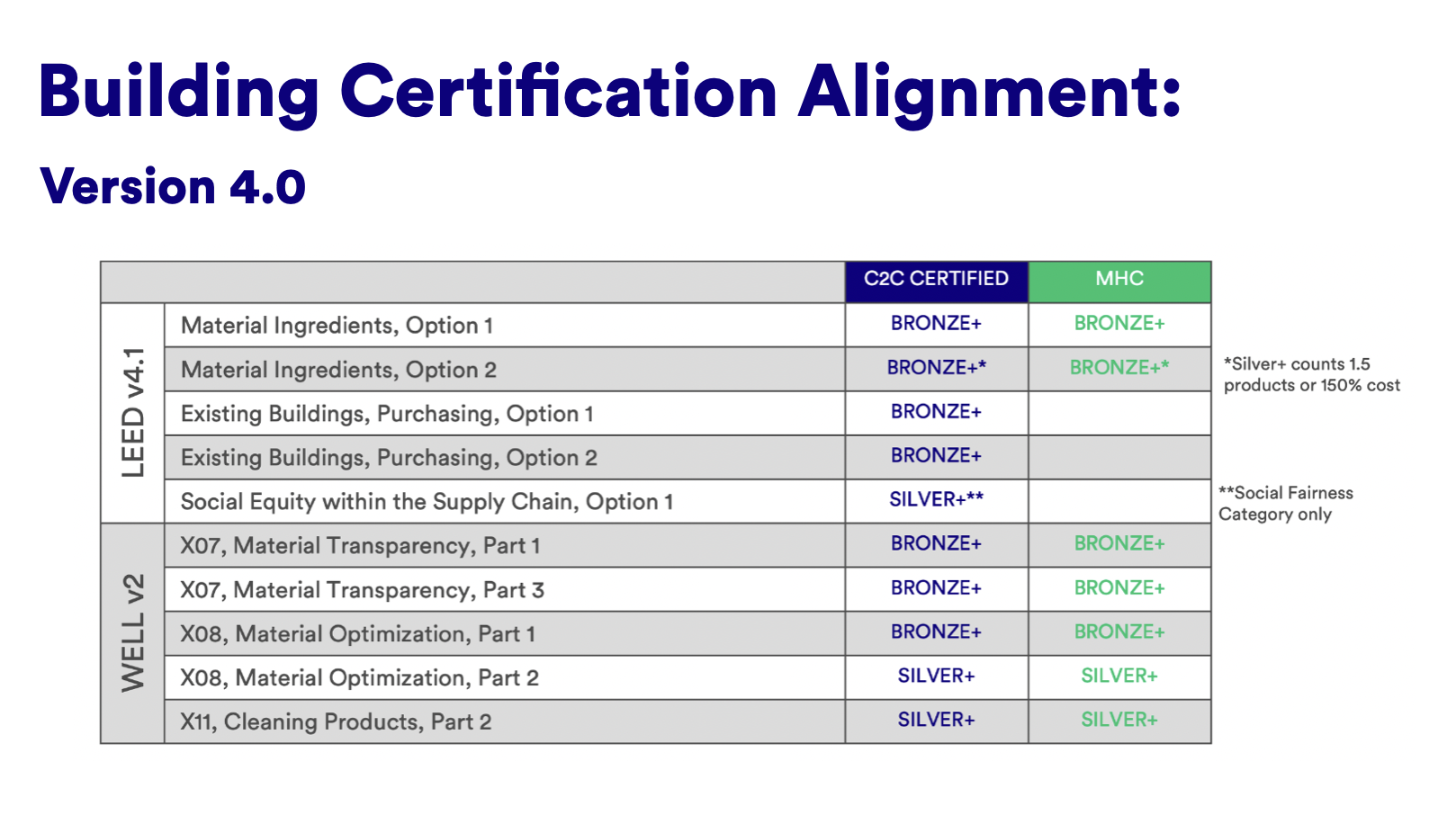LEED and WELL Standards
The building industry is responsible for 37% of annual global carbon emissions. Within that, building materials alone account for 10% of annual global carbon emissions. The use of products that are healthy for humans as well as the environment is one of today’s most pressing challenges for architects and designers.
The work to transform our industry into one that is safe, circular, and equitable will always be a collaborative effort. We are proud partners of the USGBC and IWBI, and Cradle to Cradle Certified aligns with both of these standards.
The Cradle to Cradle Certified® mark and scorecard gives architects and specifiers at-a-glance confirmation about the specific sustainability attributes of a material or product.
Cradle to Cradle Certified confirms whether:
A product is optimized for human and environmental health
A product’s materials have been assessed based on the complete hazard profiles of their chemical ingredients
An optimization strategy has been developed to phase out any chemicals with significant risks for humans or the environment
Cradle to Cradle Certified products can also help contribute points under the LEED v4 green building rating system and the WELL v2 rating system.


LEED
A Note on Material Health Achievement
While Cradle to Cradle Certified is a multi-attribute assessment, these credits focus on the Material Health aspect of the certification program. LEED will also accept products that have obtained the Material Health achievement level outlined above, but have a lower overall certification level.
For instance, if a product’s Material Health achievement level is Gold, but the product’s overall certification achievement level is Bronze, the product’s Material Health score means that it is still eligible to contribute to both points outlined above and will be valued at 150% of cost in Option 2.